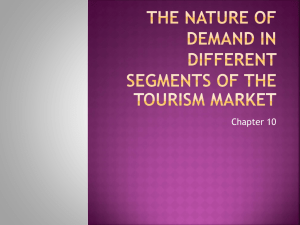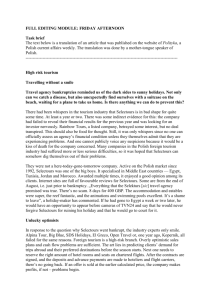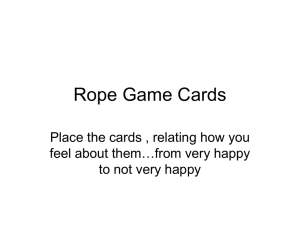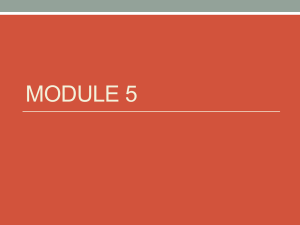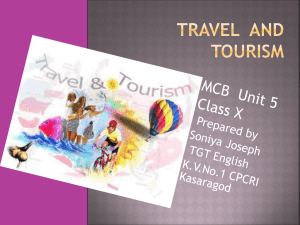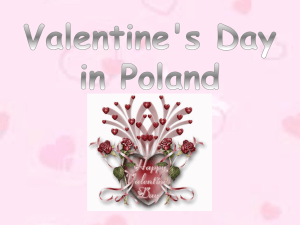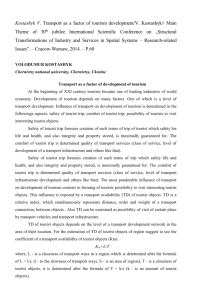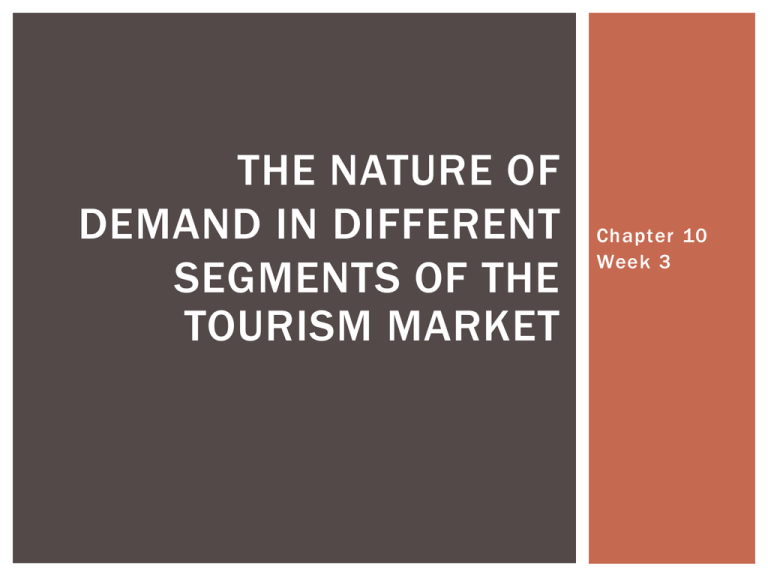
THE NATURE OF
DEMAND IN DIFFERENT
SEGMENTS OF THE
TOURISM MARKET
Chapter 10
Week 3
THE FAMILY MARKET
Nuclear family
Represents the core market for many tour operators and types of
products, including camping and caravaning trips, self – catering
holidays and theme parks
There is an existence of children many families choose
holidays that meet the needs of their children
These needs will vary depending on the age of the children
1) Babies : Holidays are chosen primarily based on baby’s safety and
comfort. E.g. parents could avoid countries with poor hygiene standards
and choosing airlines and hotels offering special services for babies, e.g.
free baby food
2) Infants : (2-5 y.o.) : short journey to the destination can be the priority as
a child may get bored on log journey. Safety is still a concern, in this
case parents will choose the place to ensure that young children who are
practicing their walking will not get into danger on balconies or near
swimming pools
3) Early school-age children (from around 5-12 y.o.)
Children at this age often want to play with children of a similar age and may be content with the
simple pleasures of play areas and swimming pools
4) Teenagers (from 13-18 y.o.)
At this age, they want to be more independent and enjoy more adult activities
When the young person wants to take a holiday seperately from their parents, it could take the form
of :
An educational trip organized by their school
An organized children camp
An activity based trip or a farm -based vacation
A single sex holiday with a group of friends
Number of children in a family has an impact on demand
Families with several children may need to look for an economically priced
holiday camping , caravaning holidays, self-catering holiday
The Tourism industry works hard to attract this lucrative market by
providing discounts for children and free children plces
However, not enough emphasis on single parent families
HEDONISTIC TOURIST
The pleasure-seeker
Usually associated with younger people and brand names such as Club
1 8-30 in UK
It is the development of the original four Ss concept of sun,sea,sand,
and sex and also the 5 th , ‘sangria’ which is the consumption of alcohol
The main motivator is the desire for physical pleasure and social life,
fashion
In recent year s , there is a growing number of people joining
distinctive night life and par tying in ‘Ibiza’
In terms of daily life style , ver y dif ferent from family market
They tend to wake up late and then spend their time around swimming pool
They will usually then go out partying and not get to bed until the following
morning
Often travel in a single sex group of friends
Prefer the freedom and economy offered by simple, self -catering accommodation
Critisms on Hedonistic tourists
Heavy drinking can lead to fights and problematic with host
community – the so-called ‘ lager lout ‘ phenomena
The risk of spreading HIV or AIDS
THE BACKPACKER MARKET
Another form of tourism which appears to appeal mainly to a
younger market is backpacking
Tourists use a rucksack or backpack rather than suitcase to
carry all their need for their trip
Some more characteristics are :
It is an independent travel rather than packaged travel
A desire to keep expenditure to minimum
A tendency to try to get off the beaten tourist track
An extended stay more than the usual duration of one to two weeks
of a normal holiday
Most of the backpackers are usually students, who can have
long vacations
This can involves people taking a year out from their education
Before they begin their college or after completing a college
Backpacking was ususaly popular amongst young people
from developed economies, e.g. US, UK, the Netherlands,
Germany, Australia, and Japan
An early example of truly global tourist
As their behavior tend to be the same, regardless of their nationality
E.g. same source of travel media, such as guidebooks namely ‘ lonely
Planet’ and ‘ Rough guide’ staying in same types of accommodation
and visit the same attractions
In Europe, ,a well-known phenomenon calling backpackers
who travel across Europe by rail is ‘ Inter -railer’
These tourists utilized discounted rail-fare packages offered to young
people
This market is likely to grow more in the future, because :
Rise in students number across the world
However, unlikely to become popular within other groups in
society, due to most working people are unlikely to get more
paid holiday
In the future, it could begin to appeal more of early retired
people who have the time and want to be more adventurous
while travelling
EXCURSIONISTS AND DAY-TRIPPERS
Traveling for one day or less for leisure purpose
Generally, they are domestic tourist
Is the core market for most visitor attractions, many seaside
resorts, and some rural areas
Day trippers usually do not plan for their trips but rely more
on spontaneous decision (e.g. deciding in the morning where
to go)
Largely a car-based market, also coach excursions
Day trippers are major consumers of food an drink services
and leisure shopping facilities, but not a major market for
accommodation
In some cases, this market can be international, e.g. a
shopping trip from Switzerland to Milan (4 hrs by train), Thai
or Malaysian people go shopping in SG or HK
THE ‘SNOWBIRD’ MARKET
Climate or weather change is the main motivator
Started from Northern Europens travelled to Southern Europe in the
summer to get the suntan
People travels to warmer place to escape the cold weather at
home
Some characteristics of this market:
Long duration trip , from 4 weeks up to four months
Normally are older, retired people who have the time to take such a long
vacation
Motivations of these older people are :
Escape the cold weather
Reduce their expenditure on heating at home
To improve their health
Make new friends and have more socialize lifestyle than they might in their own
community
ETHNIC MINORIT Y TOURISTS
Ethnic minority groups are some small group of dif ferent
nationalities that live and based their family in one particular
country
In many developed economies, just only few people from this
group are regular purchasers of the majority of Tourism
Industry
E.g. Asian in Western, Black American in US
Ethnic minority communities grow in various countries and
become more integrated and gain greater economic power
THE SHORT-BREAK MARKET
Usually, it is a travelling from 2 – 5 days
Can be both International and domestic
A growing phenomenon in the newly developing economies in
Asia
It is considered to be an additional holiday ( not a main
annual holiday
Examples of the short -break market
Romantic weekends for couple
Shopping trips, e.g. Russian tourists flying to Paris to buy luxury
products, Sg people visiting Indonesia to buy some hand made
furniture
Visiting friends and relatives trip
Health spa breaks for relieving stress and improve tourist’s health
Unlike day trippers market, short -break tourists tend to:
Not only planned and booked well in advance to
rise the sense of anticipation
-
But also last minute planning and booking as a reaction to stress
from the working life, or celebration of some good news
In a developed world, this market is likely to grow as work
pressures arising from the competitive environment

